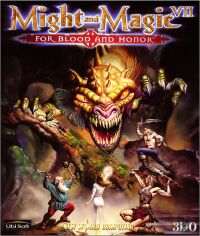|
All items in Divinity have certain properties. These properties
determine how the item can be used and what their effects are when
they are used.
A short description of several of these properties is given here:
Name
The name of the item
Item Damage (Id)
Used to determine the amount of damage an item will cause. There is a minimum amount of damage and a maximum amount of damage.
Items
that can inflict damage have an attribute set on them that will
look something like:
2D6+3
The 'D' stands for Dice, the number '6' gives the number of sides
on the dice and the number '2' the total amount of dices.
So what this says is that 2 six-sided dices will be rolled, resulting
in a number between 2 and 12.
The '+3' indicates that to the resulting number a modification is
performend. In this case 3 is added to the total, which ends up
in a number ranging between 5 and 15.
The player will only see minimum and maximum damage. When an attack
is launched, the item damage is added to the npcs default attack
value. The damage value launched at an enemy is calculated as the
sum of all item damages of the items the npc is wearing. (Depending
on Usage, see below)
Armor Class (AC)
This value is added to the default defense value of a npc for the
total armor class. (The total armor class includes all AC's of items
which can be used for defending, depending on the Usage, see below).
The total armor class is then subtracted from the total damage launched
at the npc, and the result damage is subtracted from the npcs hit
points.
Armor Absorbtion
Indicates the chance a piece of armor has to take the hit. If the die roll fails, the piece of armor is not taken into account.
Charm Quality Level (CQ)
Technically speaking every item that you can wear can have a charm
on it. Some can have multiple charms (to a maximum of 5), depending on the charm quality
level. A CQ of 0 therefore means no charm is possible.
Charms placed on an item can not be replaced. Note that the CQ is only
a restriction on the amount of charms that can be applied to an
item.
Durability
Goes down for weapons if you hit something, goes down for armor if it gets hit by something, rings/amulets have an everlasting durability.
When a player receives damage, damage gets distributed over the
items he is wearing. Only items which have Usage set to the situation
in which there is damage, are affected by this. (See below). The
value is expressed in a percentage.
When zero, the item is broken.
Usage
The attributes of some items get only used in defense or in offense.
For some it is in both cases.
Note that an item which does not have Usage set to Defense cannot
be used for defending, even if it's Armor Class is nonzero (the
same applies to Offense vs. Item damage). This allows an easy way
to eg. forbid all defensive actions against a certain enemy (see
Handicap, below).
Skill Modifier List (Sl)
For most items, there are skills available. The Skill Modifier List
contains how attributes of an item change when a certain skill is
available to a npc.
For instance, a skill could be "parry with sword". In that case
the Usage value of a sword worn by that npc would change from only
offense to both offense and defense. Important: Every variable in
the attribute description is changeable/can be added by the Sl.
(This includes the dice type or the amount of dice in the item damage,
and even includes entries in the charm list !!! The only exception
to what can be changed by a skill modifier, is the skill modifier
list itself).
Minimal Requirements
Expressed as a list of the major stats AND skills (which is also
a list) required to use the item.
Contribution to Primary Stats
Expressed as a list of the primary stats which get an increase/decrease.
Contribution to Secondary Stats
Expressed as a list of the twelve secondary stats which get an increase/decrease.
Skill Boost
Item adds a point to a certain skill (if you don't know it, you temporarily "learn" the skill for as long as you have the item equipped.
Handicap Lists
Expressed as a list of modifiers to the attributes of the item when
used against certain monsters. (For instance, axes gets a bonus
when used against skeletons)
Identification Level
A number which expresses what level of identification is necessary
to recognize the special attributes of the weapon. Special attributes
are the charms and the stat contributions.
Identify Flag
Has the item been identified by the player?
Recuperation Time
Time you need between two hits with a weapon (larger for axes than for swords for instance).
Speed
For weapons only.
Affects recuperation time and additionally can slow the attack movement for slow weapons (like a huge sledge hammer for instance).
Chance to Hit
For weapons only.
Extra chance to hit of a weapon which gets added to your normal chance to hit. It is calculated by looking at the player's offense value, the opponent's defense value, the extra chance to hit the weapon gives, and whatever skill applies.
Special Effects
Special things an item can do (for instance, a hammer has a certain chance of doing a deathblow).
Arrow Type
For items that have ranged capabilities only.
This only serves to tell the engine what kind of visual effect to
use when the arrow is shot; it does not affect semantics.
|




